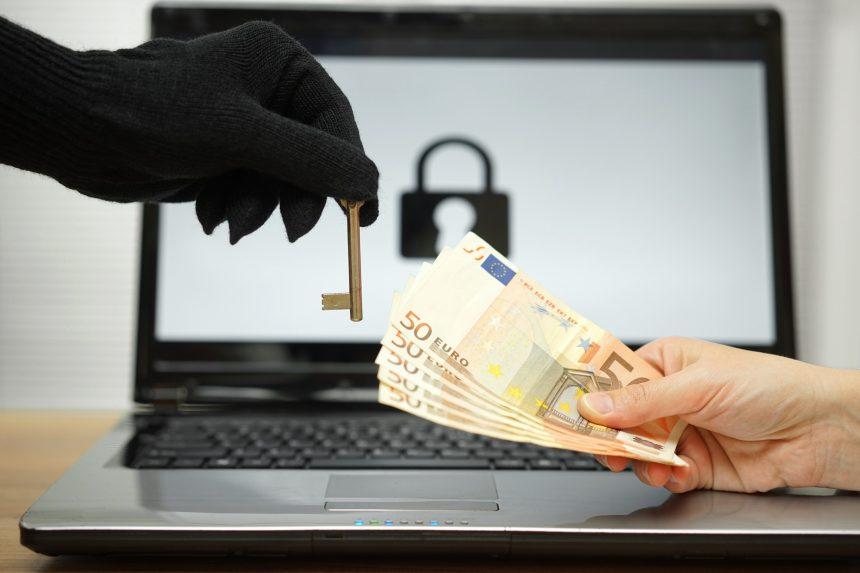Ransomware is a type of malicious software (malware) designed to block access to a computer system or encrypt its data, effectively holding the user’s files hostage. Attackers demand a ransom, typically in cryptocurrency, to restore access or decrypt the files. Ransomware has become one of the most severe cyber threats due to its ability to cause widespread disruption, financial loss, and data breaches.
The Purgat0ry Ransomware: A Concrete Threat
Purgat0ry ransomware is a specific type of ransomware that encrypts files on an infected computer, appending the “.purgatory” extension to each file. This form of malware is usually introduced into a system through phishing emails, malicious downloads, or exploiting vulnerabilities in outdated software. Once installed, it rapidly encrypts a wide range of files, rendering them inaccessible to the user.
Upon encryption, Purgat0ry ransomware drops a ransom note titled “READ_IT.txt” in every affected folder. This note contains instructions on how the victim can recover their files, typically demanding a payment in Bitcoin. The ransom note often includes a threatening message, warning the victim that failure to comply within a specified time frame will result in the permanent loss of their data.
How Purgat0ry Ransomware Infiltrates Systems
Purgat0ry ransomware typically infiltrates systems through:
- Phishing Emails: Cybercriminals use deceptive emails that appear legitimate to trick users into downloading the malware. These emails often contain malicious attachments or links.
- Malicious Downloads: Users may unintentionally download ransomware by accessing compromised websites or clicking on deceptive ads (malvertising).
- Exploiting Software Vulnerabilities: Outdated software and unpatched systems are prime targets for attackers, who exploit these vulnerabilities to gain access and install the ransomware.
Once installed, Purgat0ry begins encrypting files, modifying file extensions to “.purgatory.” The immediate consequence is the loss of access to all critical files, including documents, images, videos, and databases. The psychological impact of these attacks is severe, as victims are forced to choose between paying the ransom or losing their data permanently.
The Ransom Note: A Closer Look
The Purgat0ry ransomware ransom note, titled “READ_IT.txt,” is a crucial part of the attack. It contains the following key elements:
- Instructions for Payment: Victims are directed to transfer a specified amount of Bitcoin to a provided wallet address.
- Threats: The note typically warns that if the ransom is not paid within a certain time frame, the encrypted files will be permanently deleted or made unrecoverable.
- Contact Information: An email address or a dark web link is provided, allowing victims to communicate with the attackers.
- Decryption Promise: The note assures that upon payment, the victim will receive a decryption tool to recover their files, though there’s no guarantee that the attackers will honor this promise.
Symptoms of Purgat0ry Ransomware Infection
Identifying a Purgat0ry ransomware infection involves looking for specific symptoms, including:
- File Extensions: The “.purgatory” extension on encrypted files.
- Ransom Note: The presence of “READ_IT.txt” files in multiple folders.
- Unresponsive Applications: Programs failing to open or crashing due to encrypted files.
- Increased CPU Usage: The ransomware’s encryption process can cause a noticeable spike in CPU usage.
- System Sluggishness: The system may become slow or unresponsive due to the encryption process.
Detection Names for Purgat0ry Ransomware
If you suspect your system has been compromised by Purgat0ry ransomware, you can look for the following detection names used by various antivirus programs:
- Trojan.Ransom.Purgat0ry
- Ransom.Purgat0ry.A
- Purgat0ryCrypt
- Ransom:Win32/Purgat0ry
Similar Ransomware Threats
Purgat0ry is not the only ransomware that users should be wary of. Similar threats include:
- LockBit: Known for its rapid encryption speed and complex decryption process.
- REvil (Sodinokibi): A notorious ransomware strain used in high-profile attacks.
- Maze: Combines file encryption with data theft, threatening to leak information if the ransom isn’t paid.
Comprehensive Removal Guide
Removing Purgat0ry ransomware from your system requires a careful, step-by-step approach:
- Disconnect from the Internet: Immediately disconnect your computer from the network to prevent further damage and stop the malware from communicating with the attacker.
- Boot into Safe Mode: Restart your computer and boot into Safe Mode to limit the malware’s ability to operate.
- For Windows 10:
- Press
Win + R, typemsconfig, and hit Enter. - Go to the “Boot” tab and check “Safe boot.”
- Click “OK” and restart your computer.
- Press
- For Windows 10:
- Use Anti-Malware Software: Download and install SpyHunter.
- Perform a full system scan using SpyHunter to detect and remove Purgat0ry ransomware and any associated files.
- Follow the software’s instructions to quarantine and delete malicious files.
- Restore Files: If you have a backup, you can restore your files after removing the ransomware. If not, you may need to consider using a professional decryption tool or contacting cybersecurity professionals for assistance.
- Prevent Future Infections: After removal, take steps to secure your system:
- Update Software: Ensure all software, including your operating system, is up to date to close any security vulnerabilities.
- Install Antivirus: Keep a robust antivirus program running and updated.
- Backup Regularly: Regularly back up your data to an external drive or cloud storage to avoid future loss.
Preventing Ransomware Infections
To prevent Purgat0ry and other ransomware from infiltrating your system, follow these best practices:
- Be Wary of Emails: Avoid opening attachments or clicking links in unsolicited emails.
- Download Safely: Only download software from trusted sources.
- Keep Your System Updated: Regularly update your operating system and software to patch security vulnerabilities.
- Use Strong Passwords: Implement strong, unique passwords for all accounts, and enable multi-factor authentication where possible.
For ongoing protection, download SpyHunter and scan your computer for free. This tool can help you detect and remove ransomware, preventing future infections.





